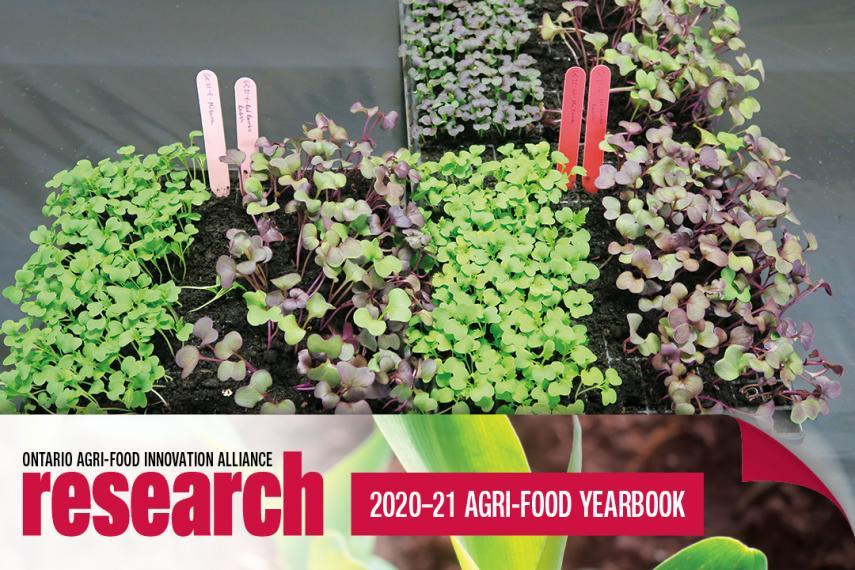These micro-veggies are poised for major impact

More food, less space: that’s the mantra of those trying to figure out how we’ll feed future populations as arable land becomes less available.
One answer is microgreens, vegetable greens that are picked directly after the first leaves have developed — specifically, after sprouting of the cotyledons, which are the initial leaves that are visible after successful germination of the seed.
Just like conventional crops, microgreens need research-based approaches to help them flourish. And that’s where Department of Food Science PhD candidate Oday Alrifai comes in. He’s studying the nutritional quality, enhanced flavour and appearance of microgreens grown under LED lighting.
“With the global population being projected to reach new heights by the year 2050, more space and resources will be required for cultivation,” says Alrifai. “We hope to inspire the up-and-coming generation on the importance of growing your own vegetables with space and resource limitations, and help contribute to the global effort of improving vegetable nutrition while cutting down on resource use.”
Microgreens can be grown in limited space with LED lights, which are relatively inexpensive and readily available.
Alrifai works with eight varieties of microgreens from the cruciferous family, including radish, mustards and mizunas. Early results indicate that with more amber light from LED technology, the phytochemical content in the microgreens also grows.
Phytochemicals are antioxidants, popular with consumers and abundant in the crucifers Alrifai is studying. He hopes ultimately to verify the specific antioxidant and anti-inflammatory potential of these phytochemicals, so that microgreens can be tailored to meet individual nutritional needs.
Alrifai says that the LED design and its impact on nutritional qualities could be used in vertical agriculture or high-tech chambers.
For his research, Alrifai is using state-of-the-art controlled environment chambers at the Agriculture and Agri-Food Canada (AAFC) Research Station in Harrow, Ont.
Alrifai received a Highly Qualified Personnel (HQP) scholarship. The HQP program is funded by the Ontario Ministry of Agriculture, Food and Rural Affairs through the Ontario Agri-Food Innovation Alliance and the University of Guelph’s Food from Thought program. This research is supported by AAFC.
This article originally appeared in the 2021 Agri-Food Yearbook edition of Research magazine.
Written by Otaiba Ahsan.